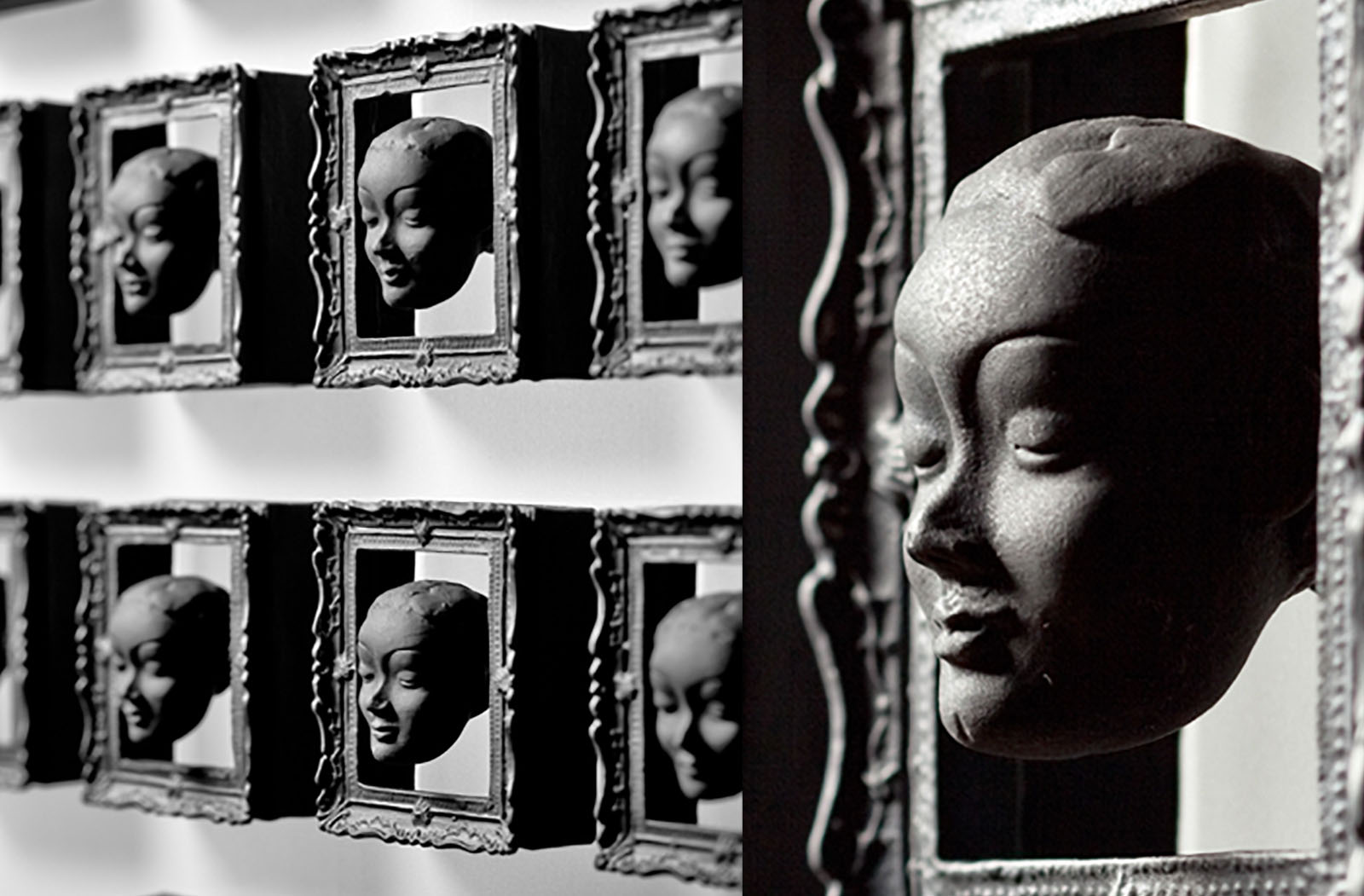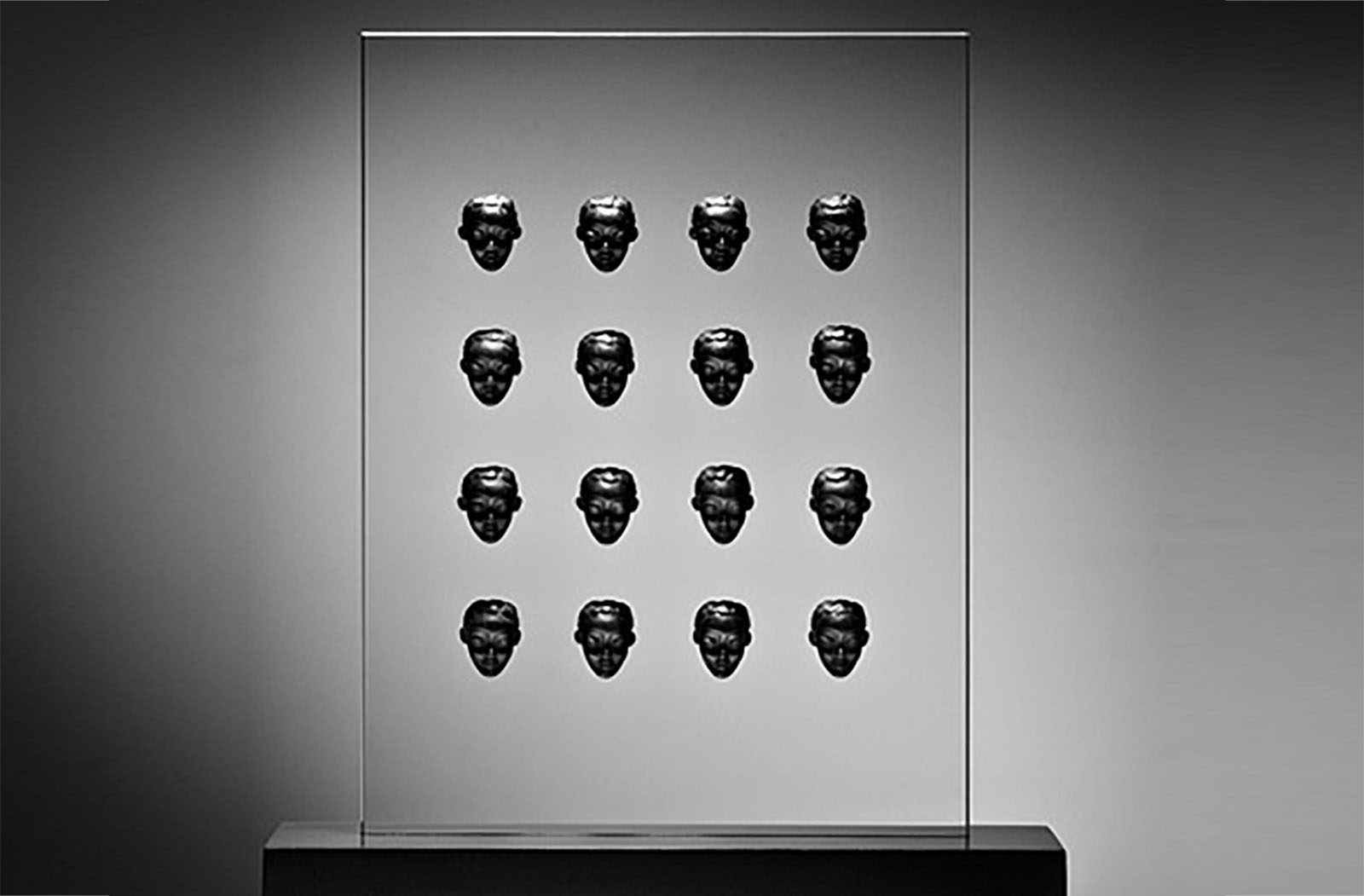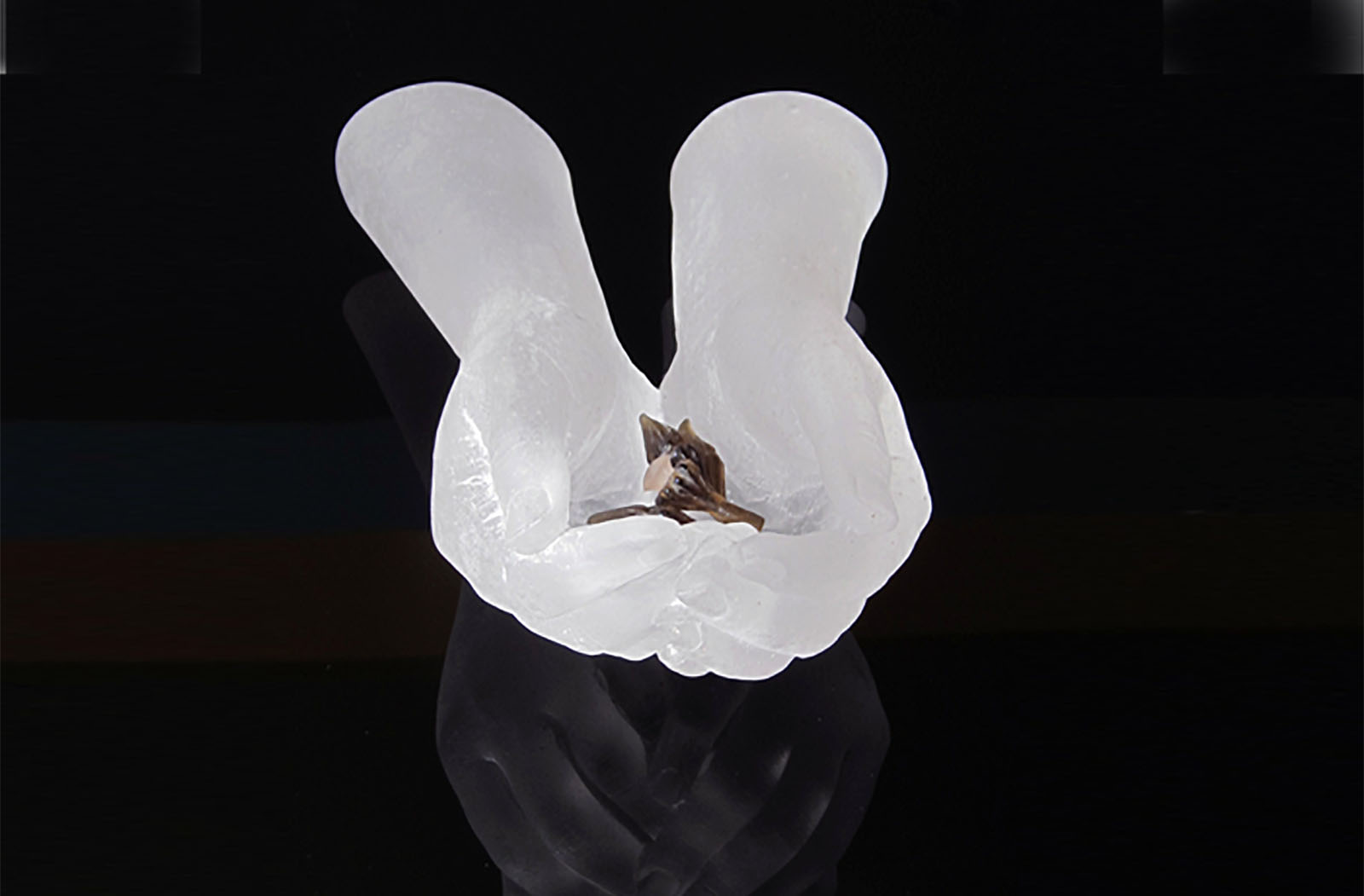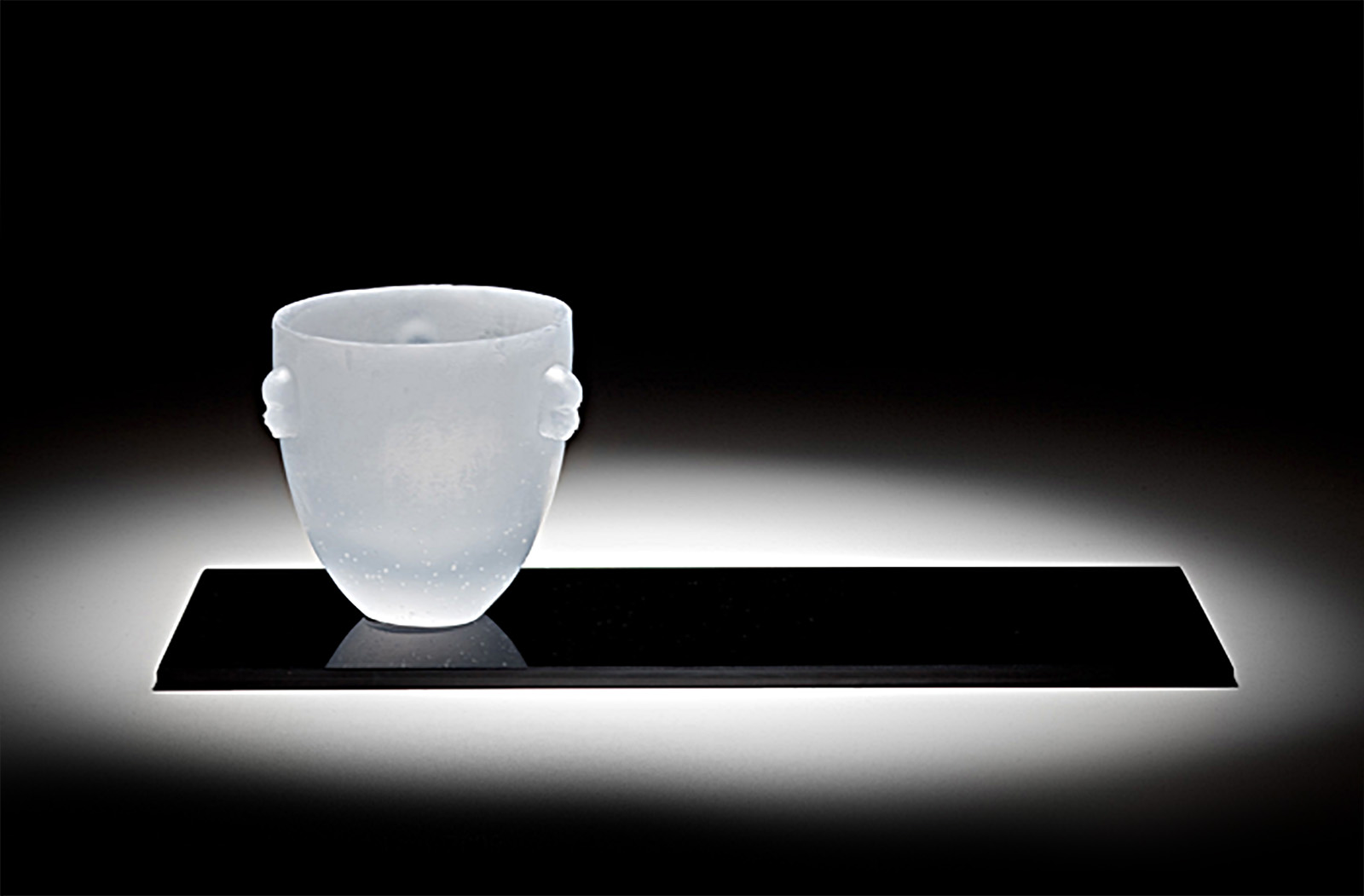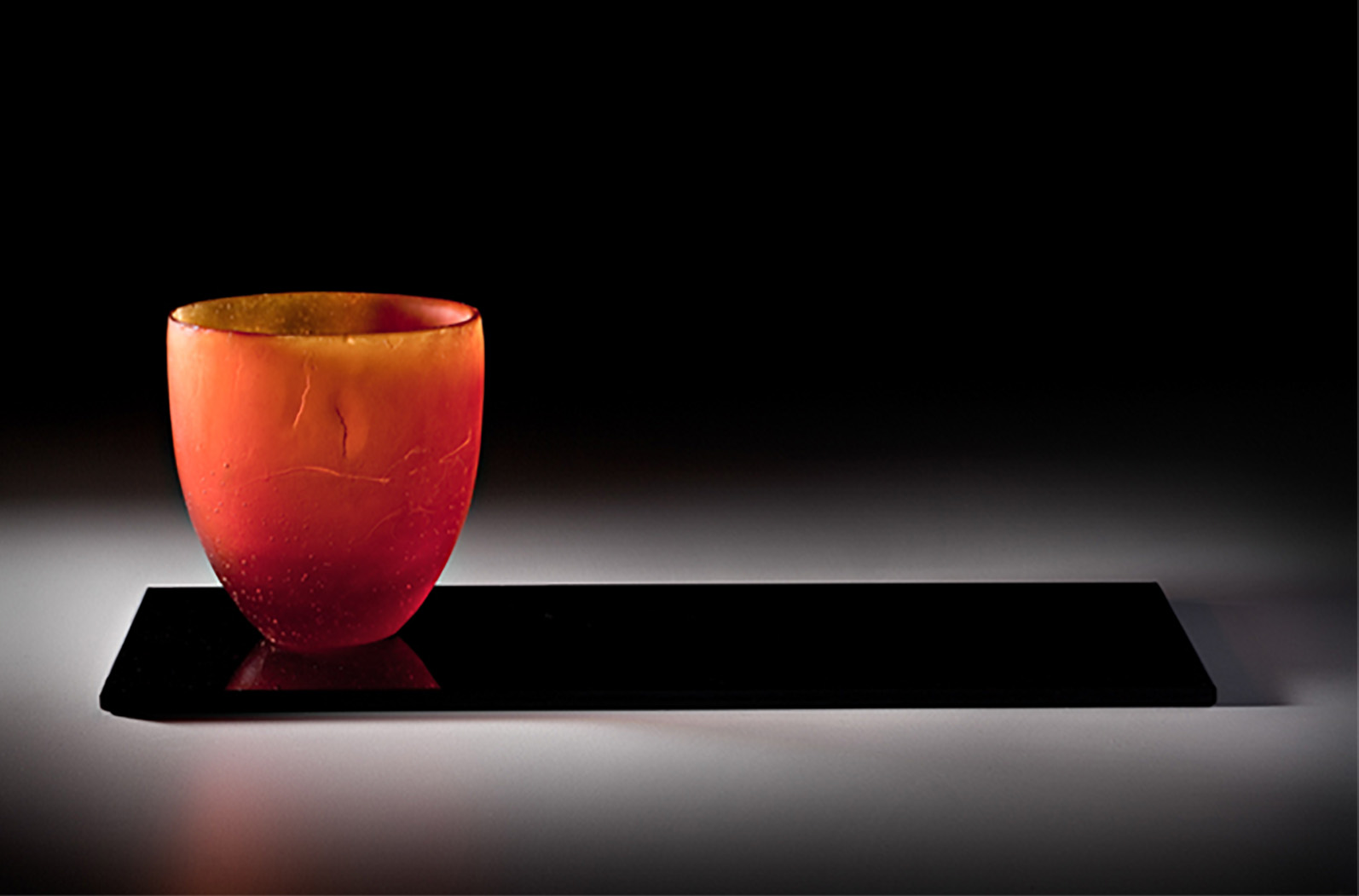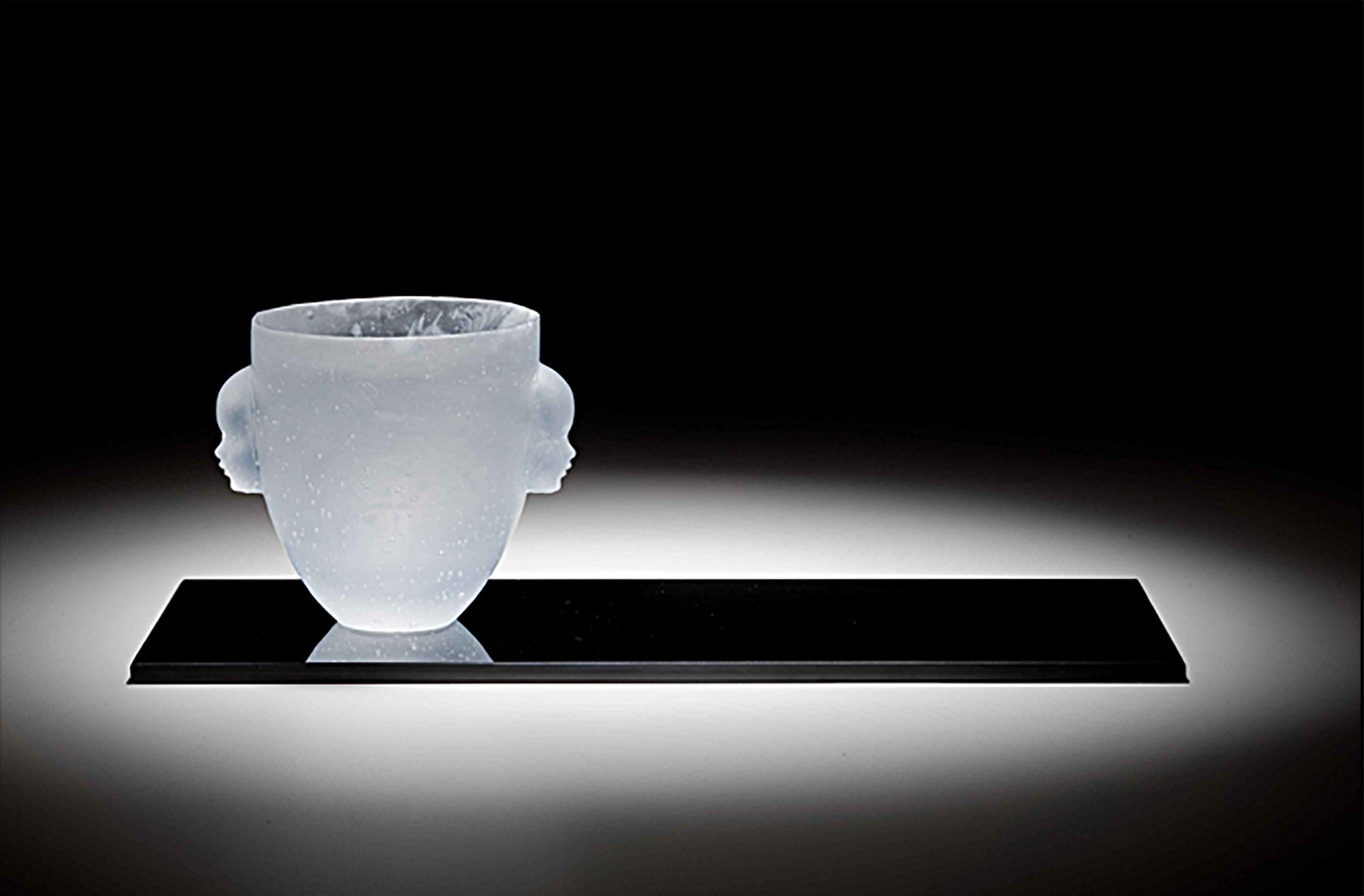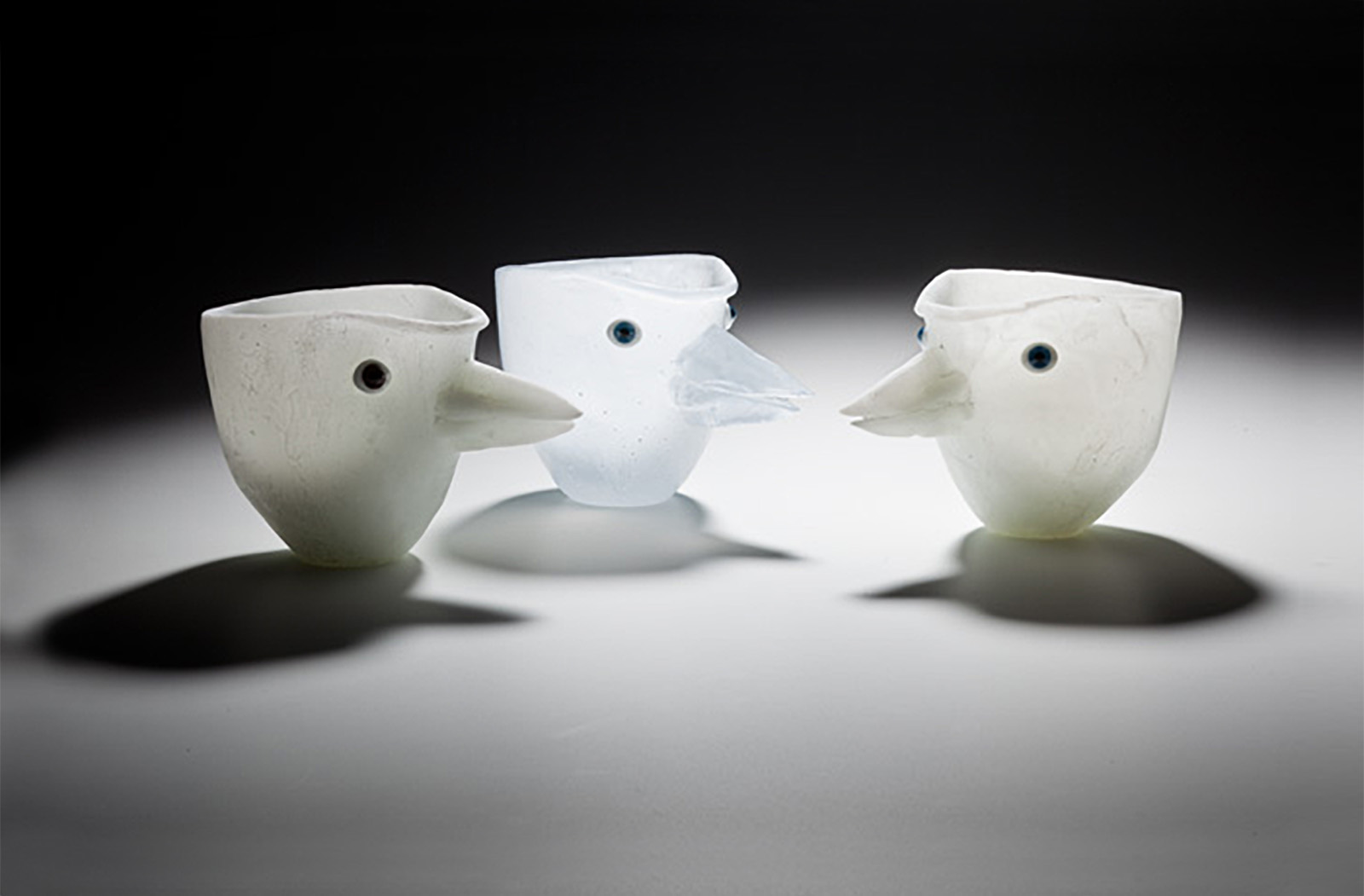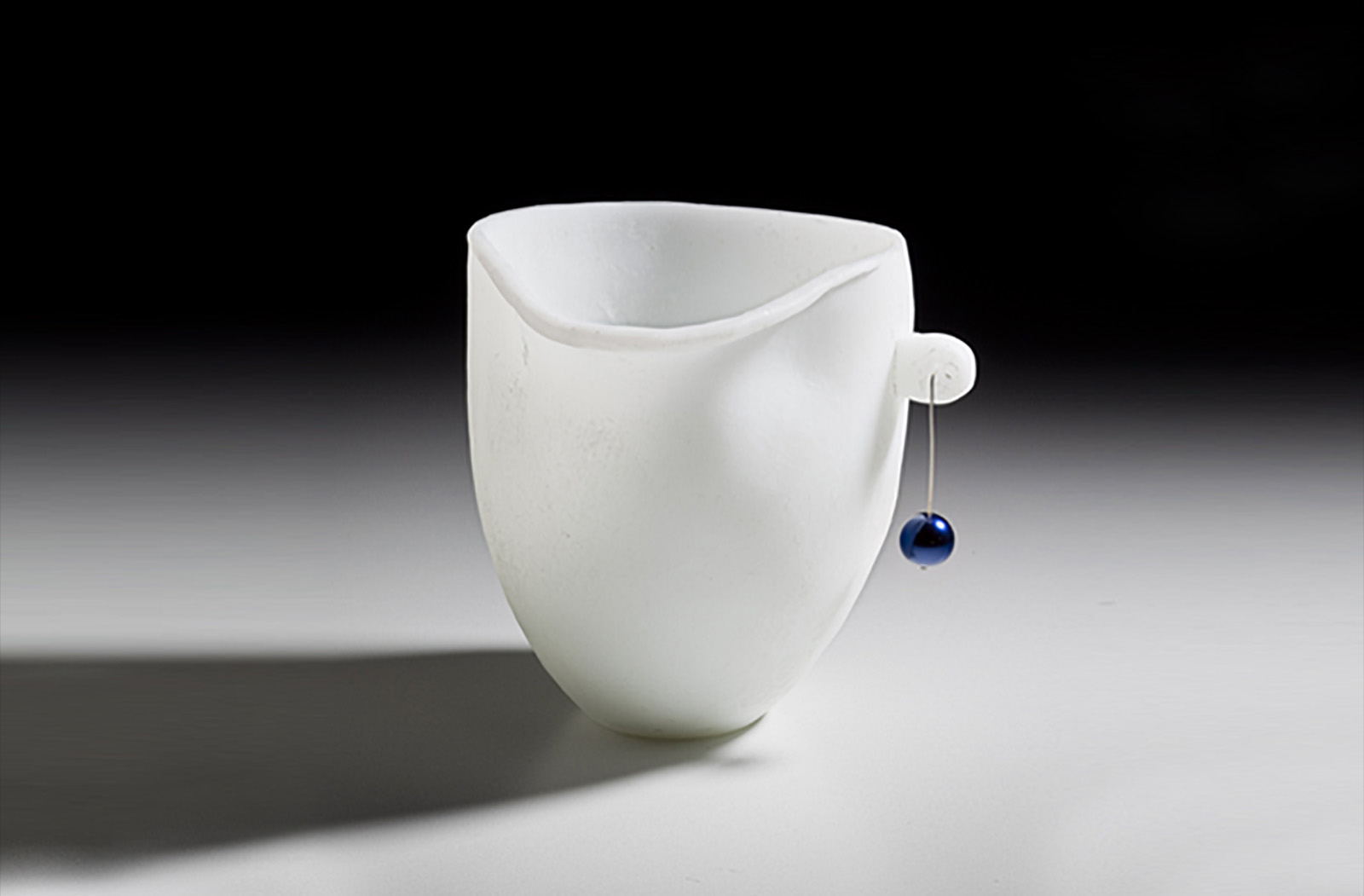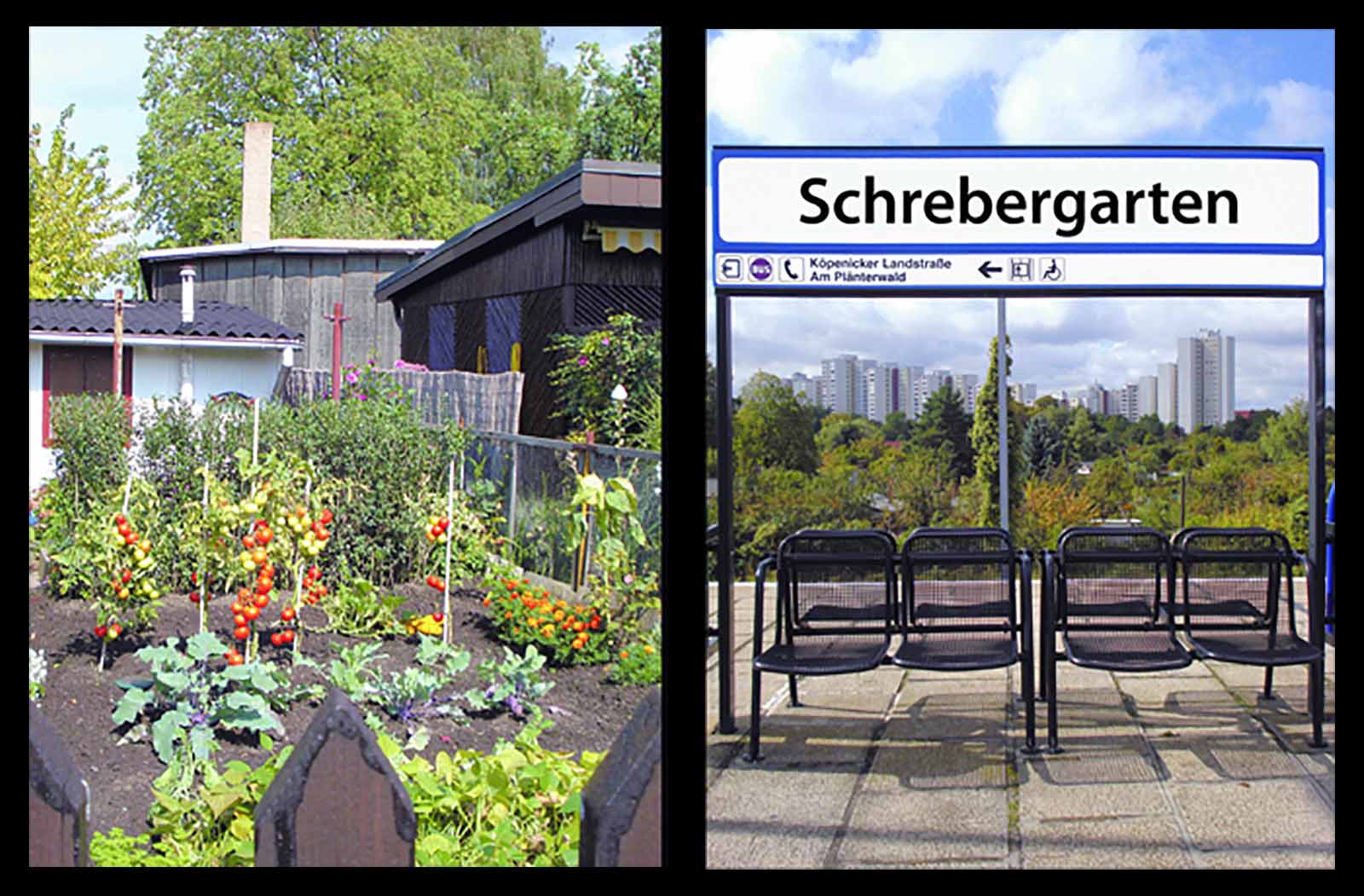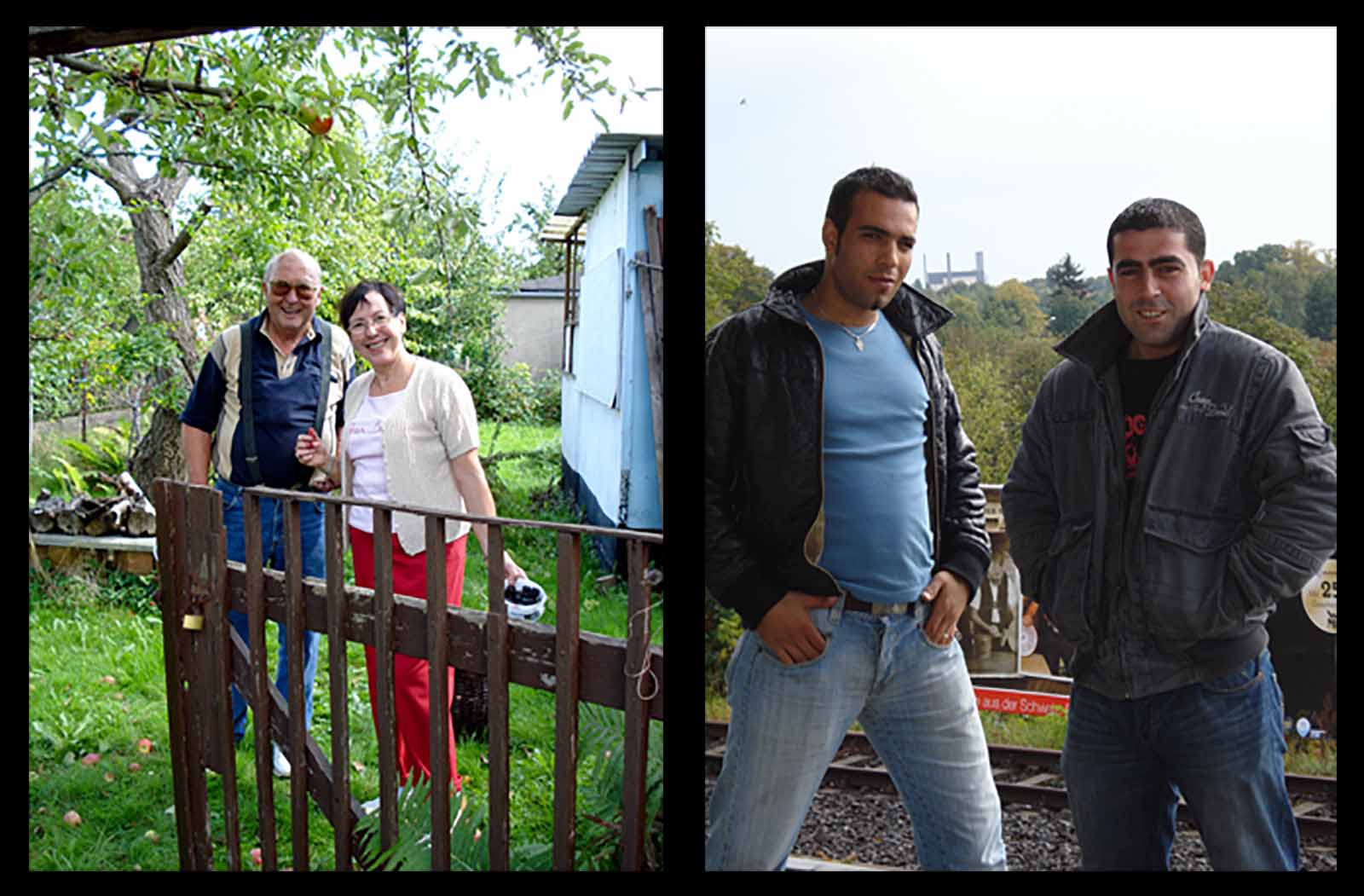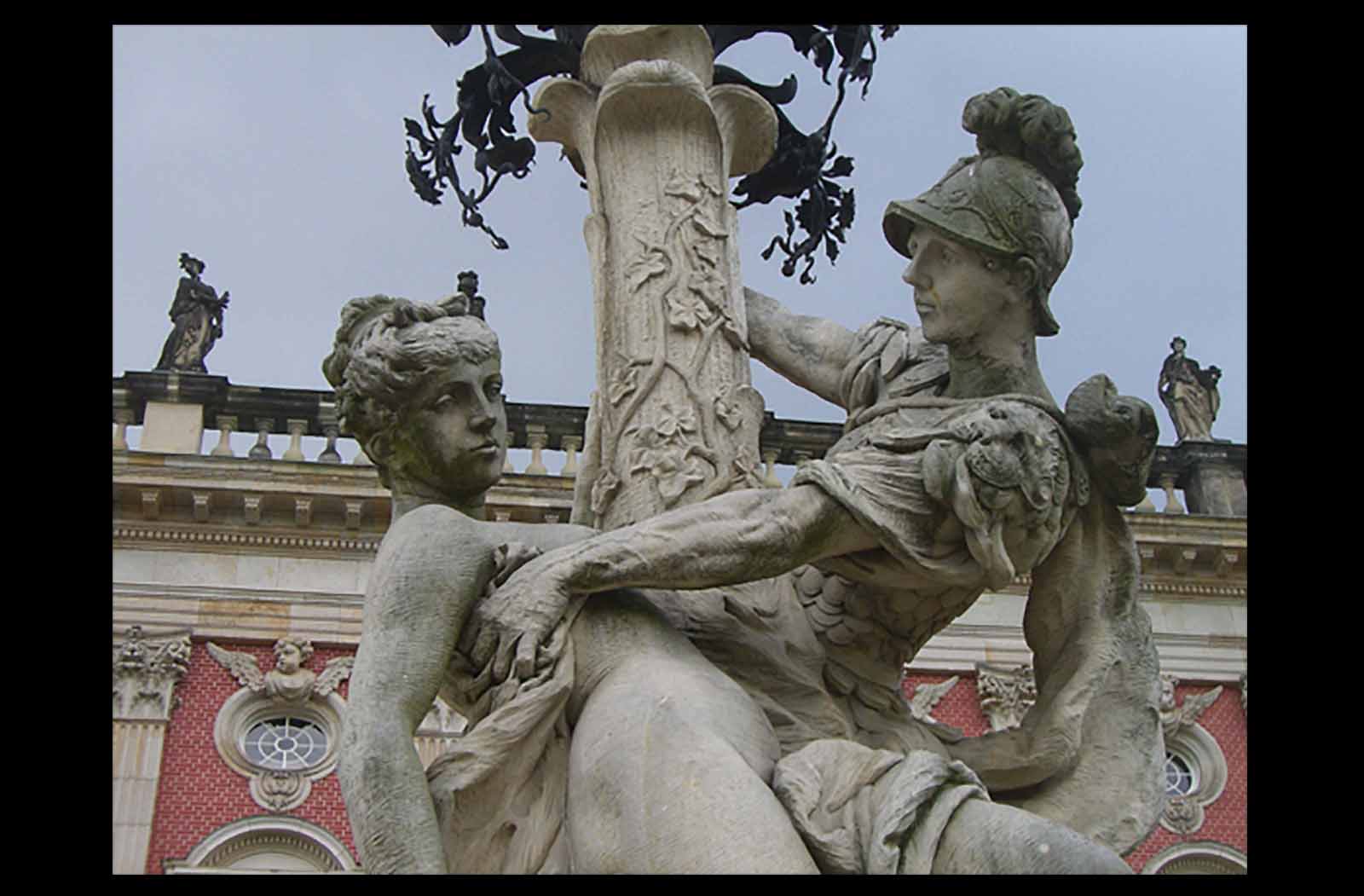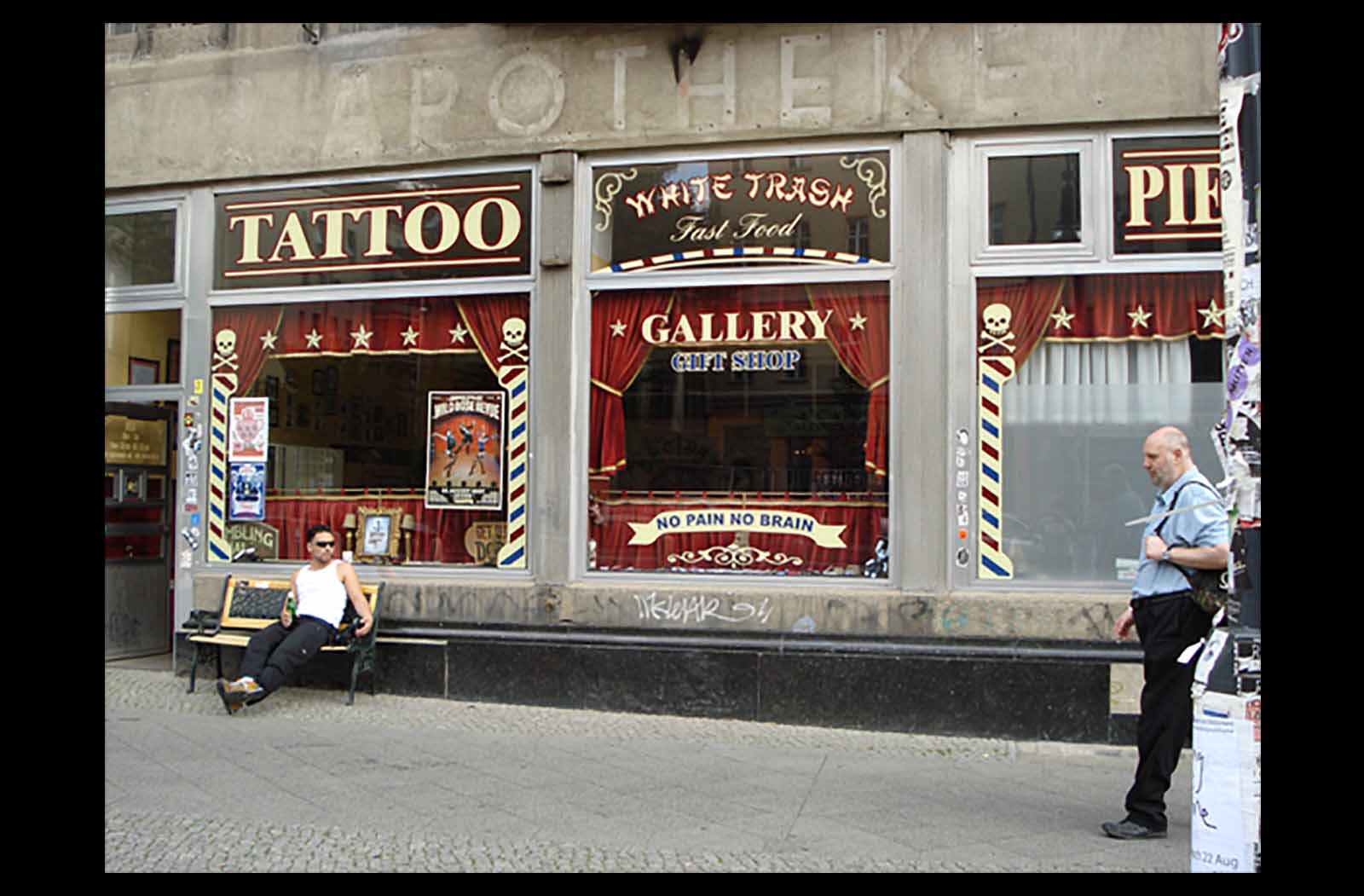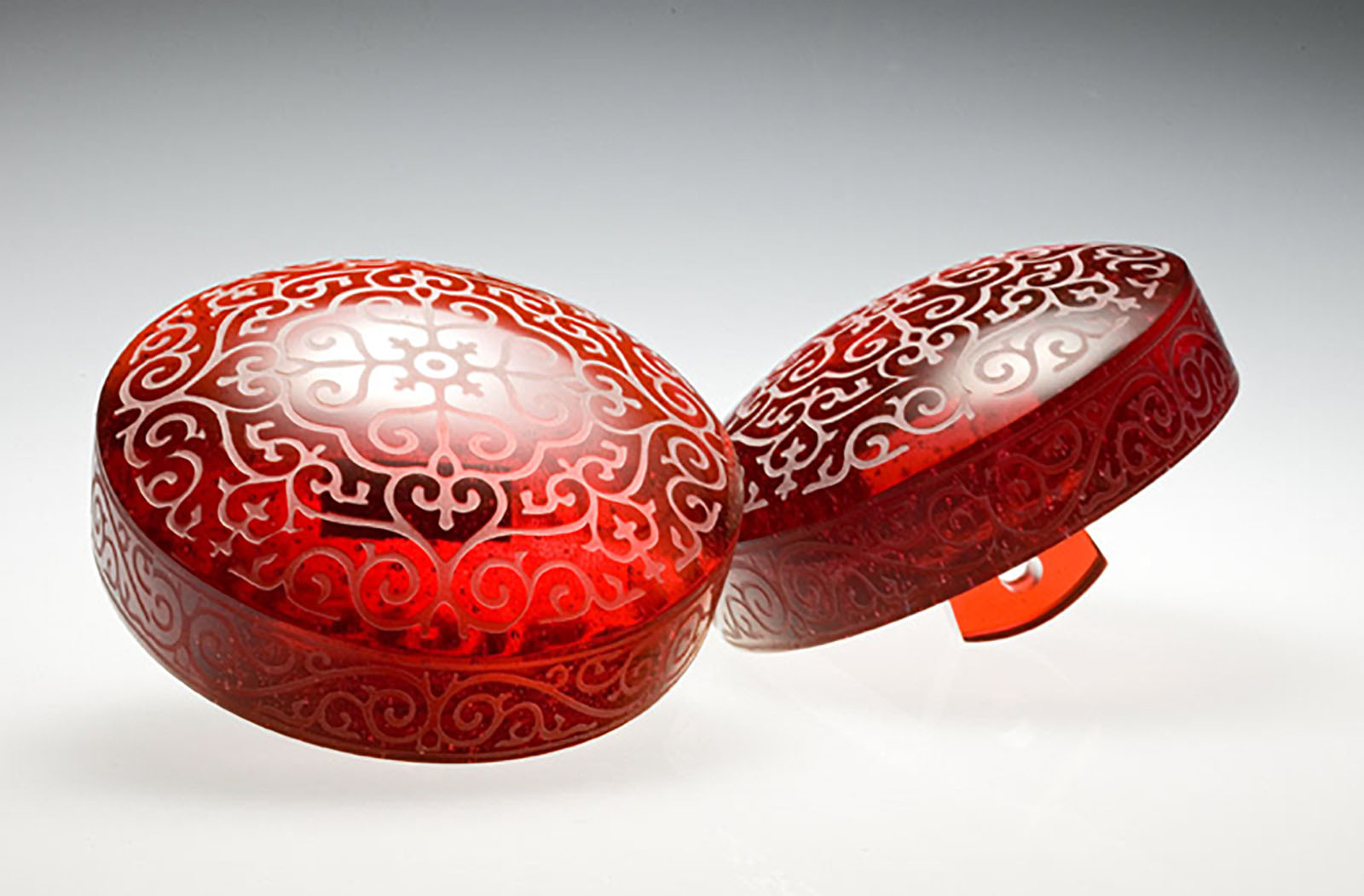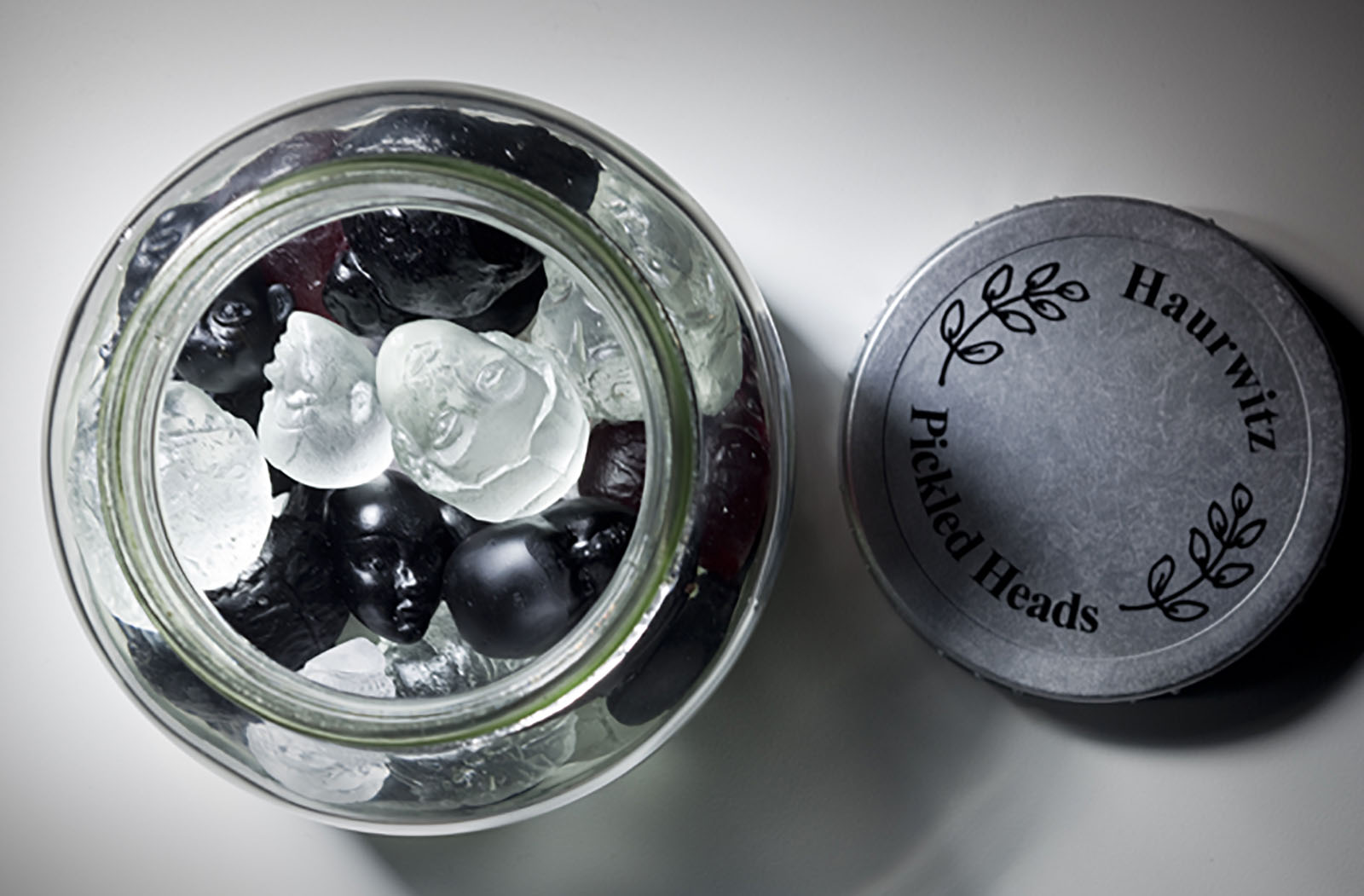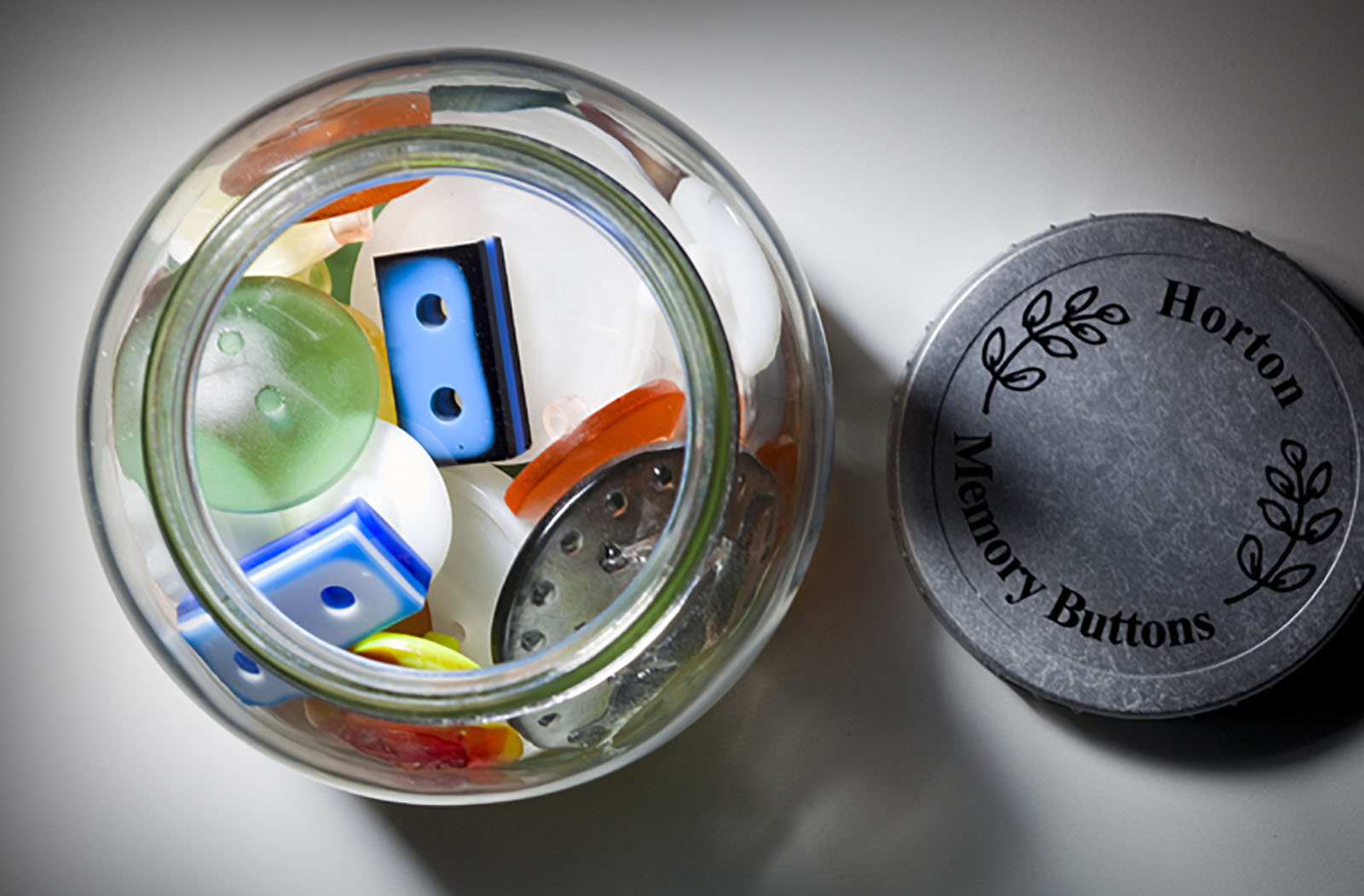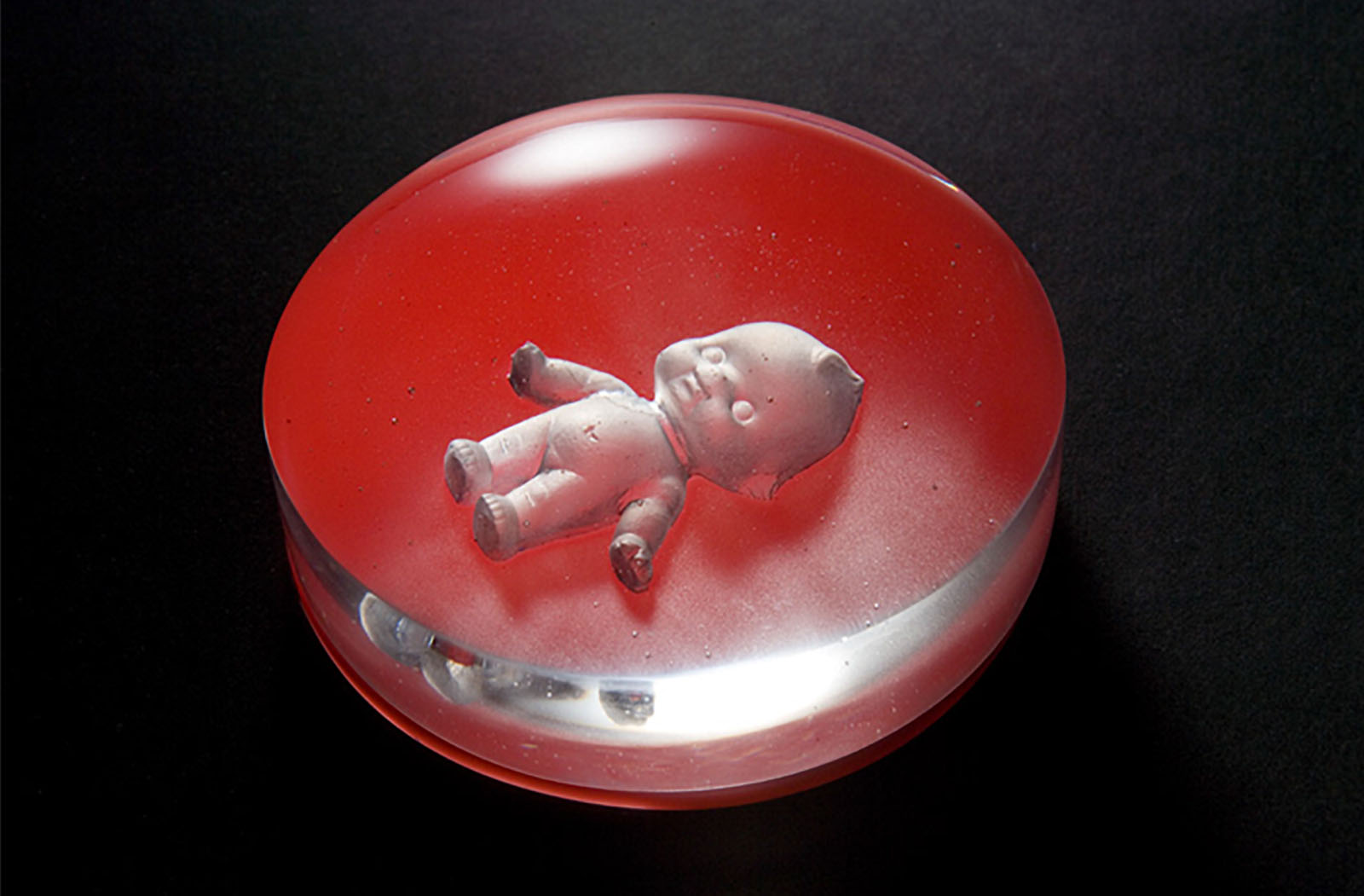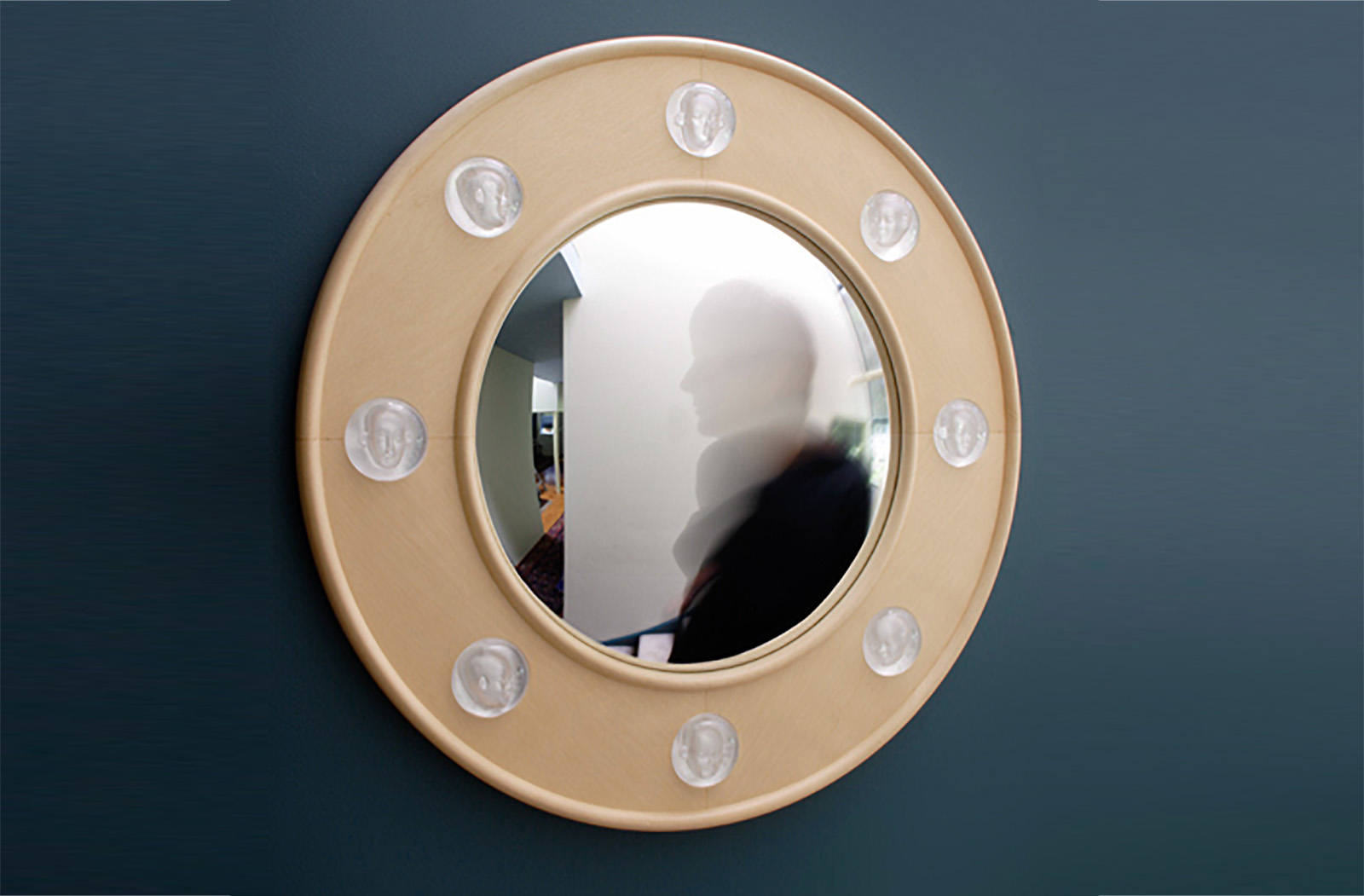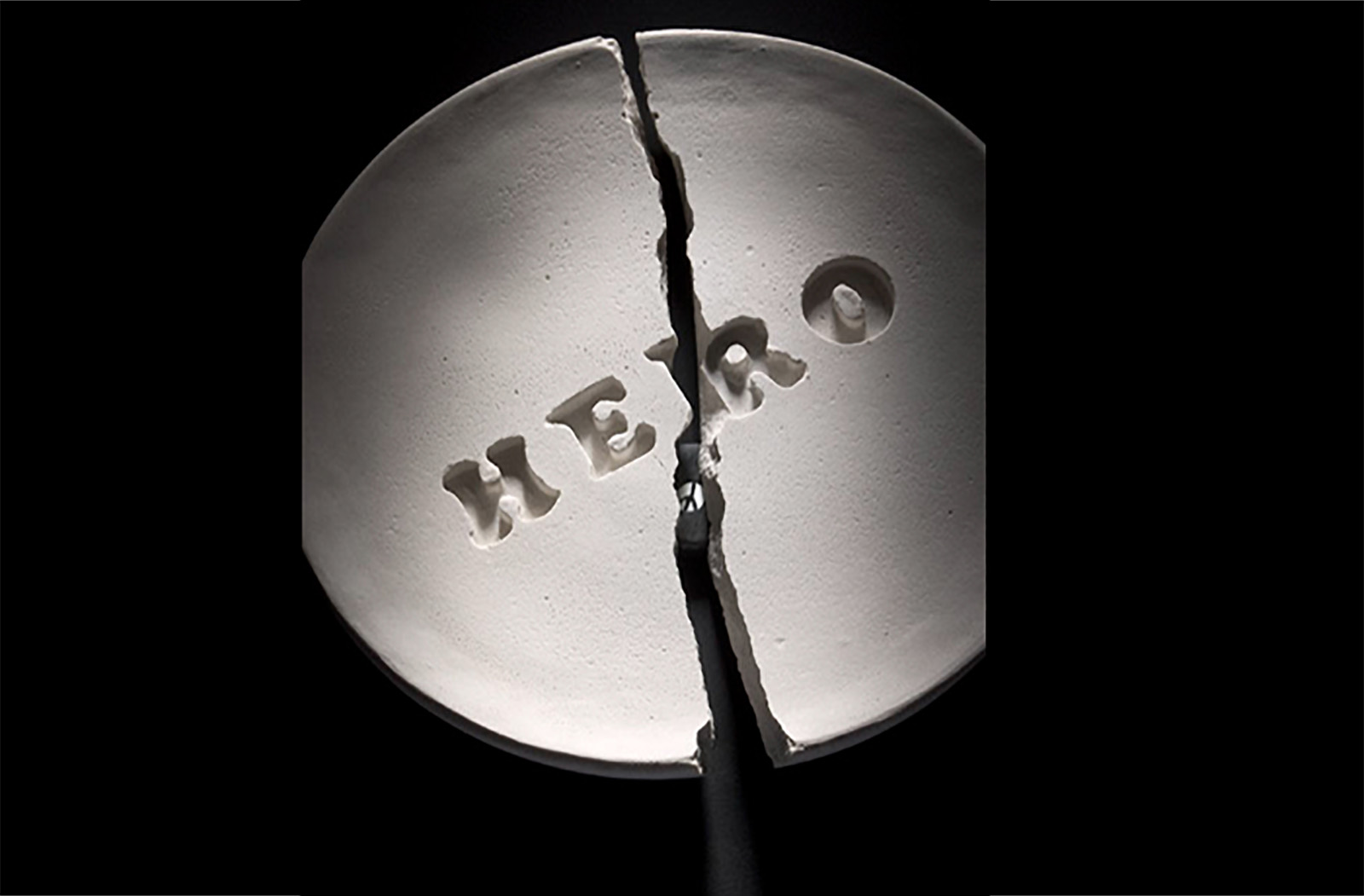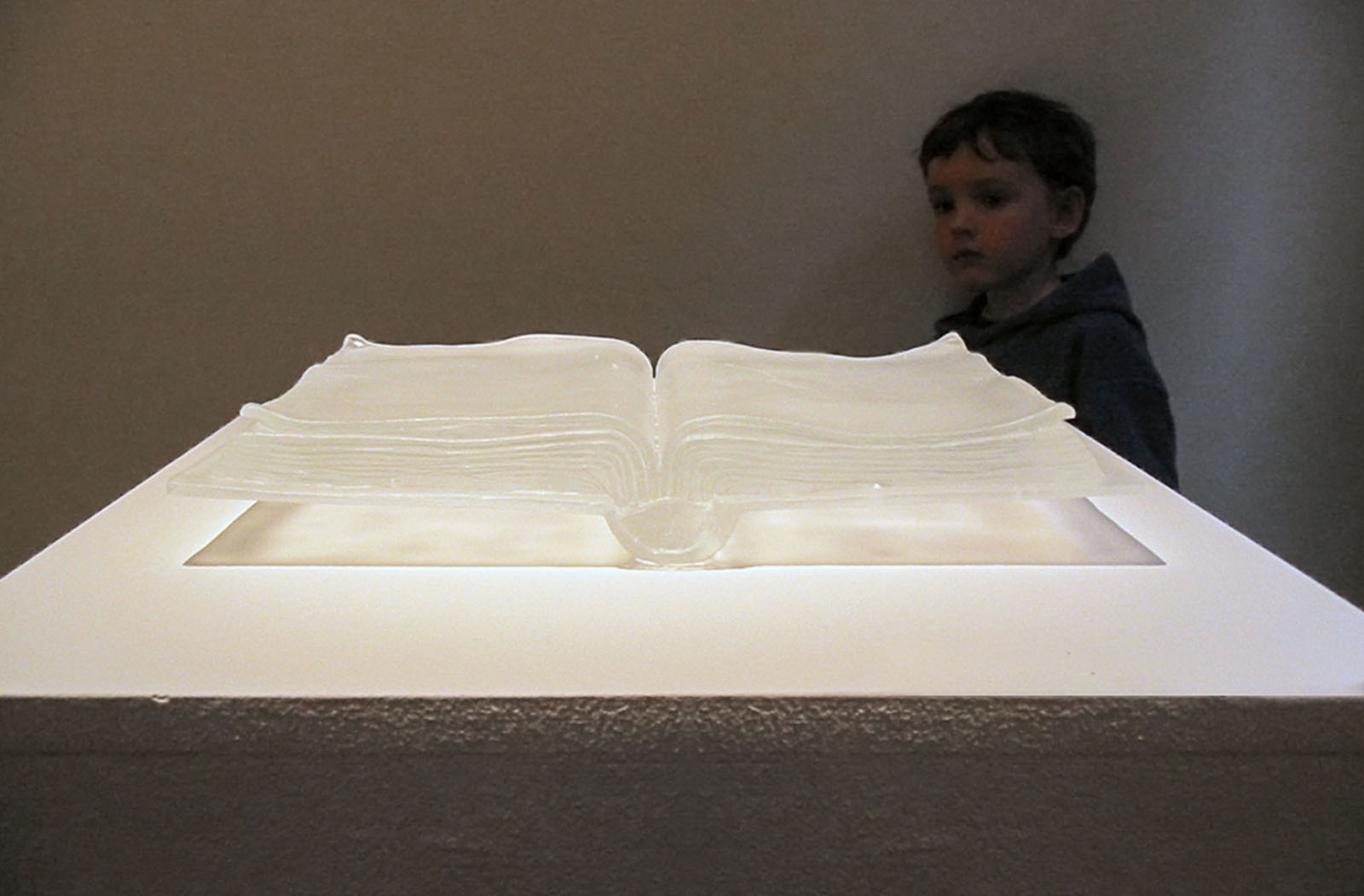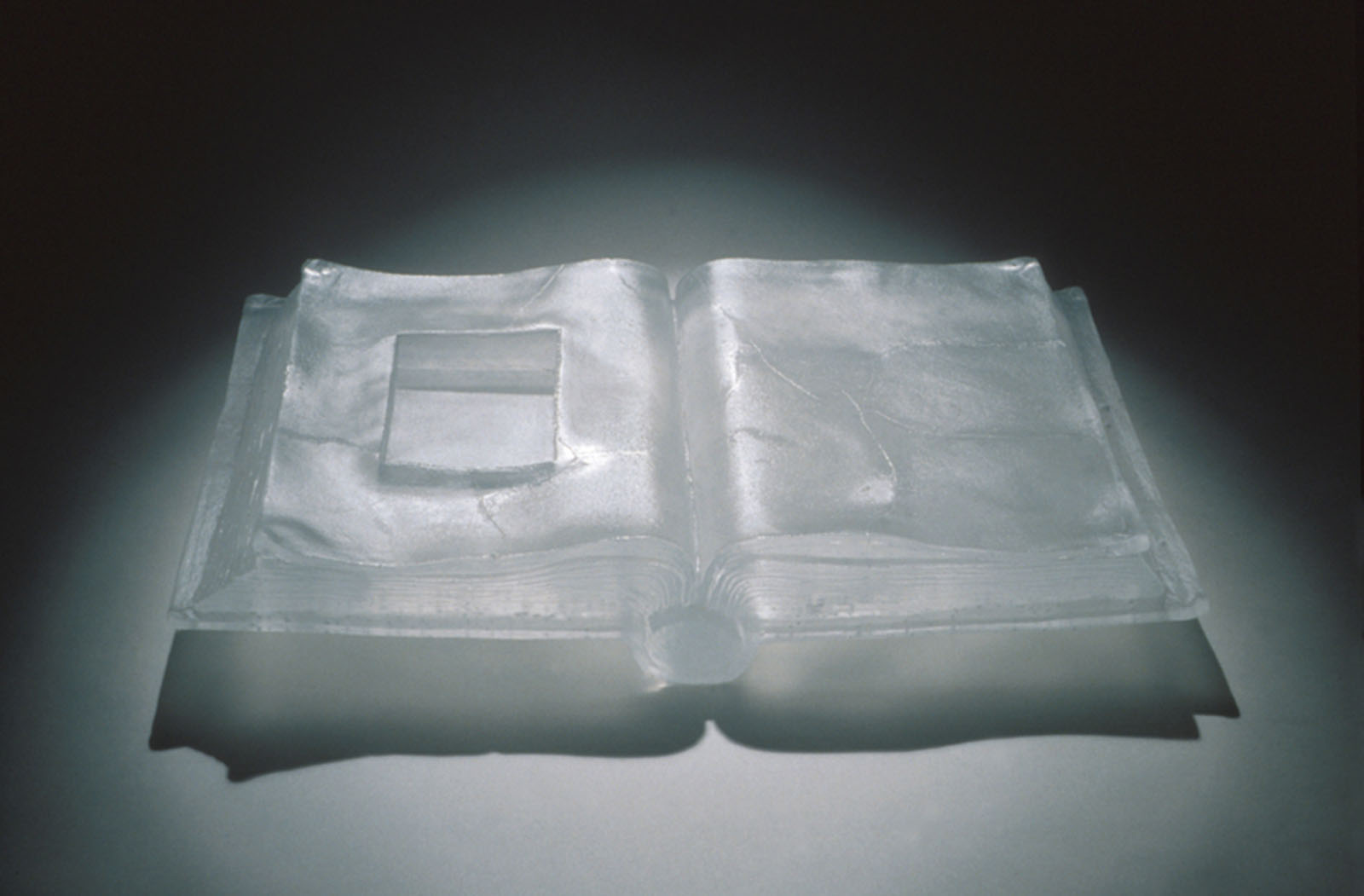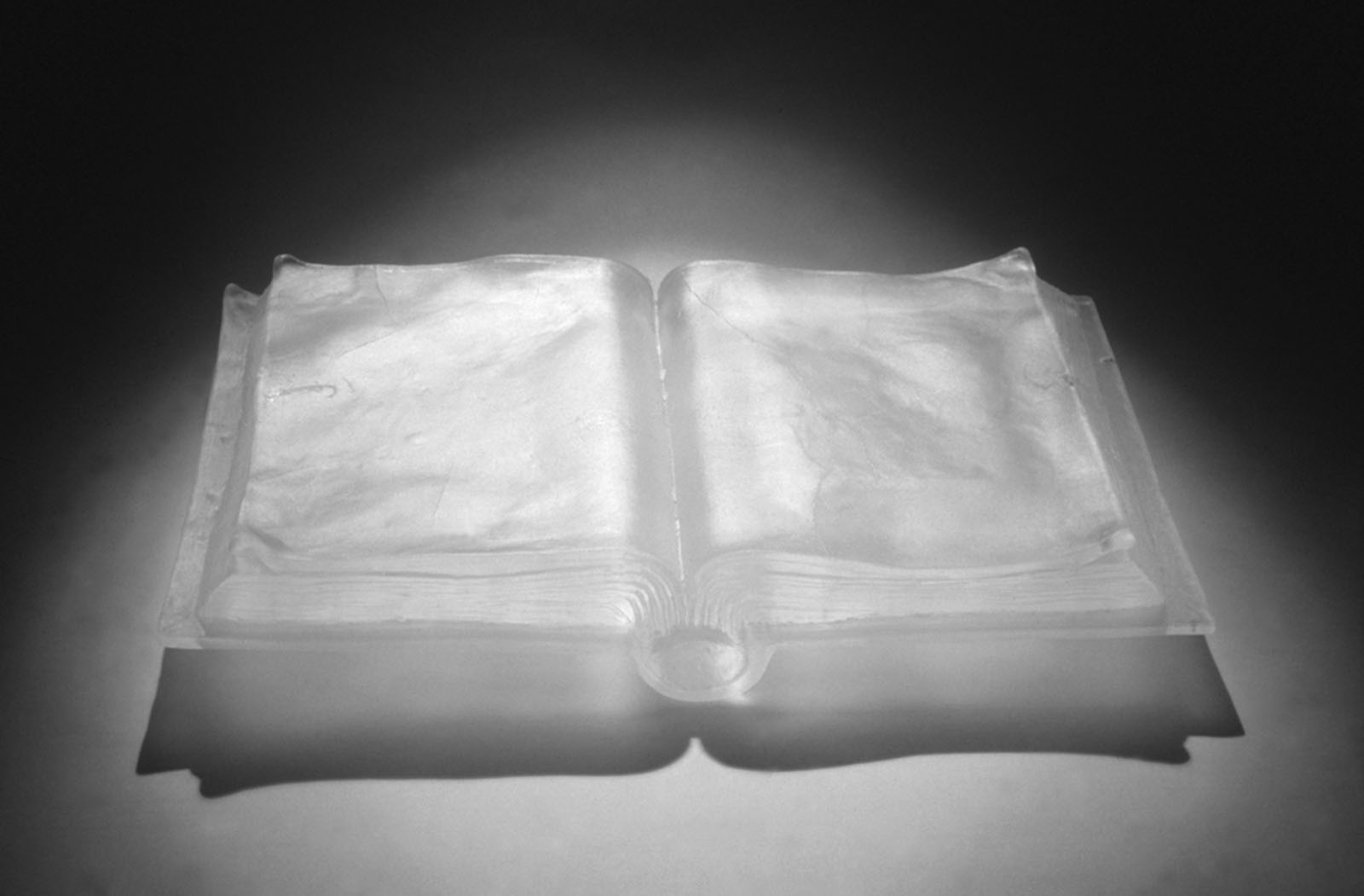PERSPECTIVE
SHIFTED, MELBOURNE – 2010
I’ve often wondered why I judge people or certain situations and then in hindsight feel troubled that my preconceived thinking is so different to the reality of the situation. Nothing is ever black and white there are always degrees of sameness, contrast and change, the grey areas ‘in between’.
When black or white glass objects are made the reflection created is always a 'shade of grey'. The colours we see are simply a degree of how much of this colour present in light is reflected and are symbolic of my impressions after a three month residency in Berlin.
The work is cast in precious white and black glass, ancient materials associated with a rich history that affirms both the strength of European tradition and its fragile presence in the face of global commodification.
All photographs by David McArthur except Gumnut Offering: Photograph by Ede Horton.
NEWS FROM BERLIN
2009
Chinese Whispers
relates to this period where I was questioning the difference between the beauty of classic form as seen in many of the museums of Berlin and the taxidermy craze sweeping Berlin's contemporary art scene at the time.
White with Attitude
The vessel form is empty and white with innocence.
A single black shiny pearl swings from a protruding earlobe as if still undecided. This work evolved from watching the young people hanging around the train stations in the former east part of Berlin.
All photographs by David McArthur
NEWS FROM BERLIN
JEWISH MUSEUM OF AUSTRALIA – 2009
The title News from Berlin emerged after a three-month studio residency at Berlin University, which I was awarded through the Karl Hofer Society.
I had last been in Europe eighteen years ago. Since then, research into my family history and about my German father had inspired my art practice. When two colleagues returned recently from Berlin and recommended the studio residency at Berlin University, I was excited by the possibility of living in this city so widely regarded as an active and progressive centre of contemporary culture.
Of the bedtime stories I remember my father telling me as a child, some were folktales passed down through the generations and some were sheer fantasy, made up on the spot. But I loved best the memories he recounted about people and places that were part of his world there - his family, the department store, and grandpa’s woollen mill. Part of my journey was to reclaim a sense of how German culture has shaped me unconsciously and instinctively.
News from Berlin became my way of corresponding and emailing home visual impressions of my experience of being in Berlin. These impressions included visiting the cultural sites and tourist attractions, experiencing the grandeur of Charlottenburg Schloss, the porcelain collection at Kopenick Schloss or travelling through the Schrebergartens to the tattooists and T-shirt stands of fashionable Prenzlauerberg and Kreuzberg.
IN THE MAKING
CRAFT VICTORIA, MELBOURNE – 2008
This work was a response to issues of power and suppression, guile and cunning, the predator and the preyed upon; all contained dilemmas that encouraged expression of this work.
Photograph by David McArthur.

Thriving amongst the Cunning and the Ruthless, 13 x 30 x 8 cm kilncast lead crystal glass, lamp worked eye
BUTTON SERIES
INSPIRATION, WAGGA WAGGA ART GALLERY – 2006
FLINDERS UNIVERSITY ART MUSEUM, ADELAIDE – 2006
We all love to collect; by nature we are hunters and gatherers in our own ways.
Buttons are an everyday commodity. They are small, generally inexpensive and instilled with memories - that's my inspiration for why I have spent countless hours carving these common-placed objects from wax. The more I look at them, the more I have become obsessed and intrigued by their history, beauty and diversity.
My interest in crafting buttons started when I inherited her mother's button jars, and all of the memories associated with them. Like many of you, my mother's button jar was probably a source of many stories chronicling the past. She would sew and I would play with the buttons - lining them up and sorting them out by colour and shape.
I vividly recall my father’s olive green cardigan which had beautifully handcrafted leather buttons and suede elbows. He wore this cardigan around our home, and I associate good feeling with this garment. I claimed it later for myself when I was studying.
My neighbour recalls playing tiddly winks with buttons as a young boy; my girlfriend Wendy from New Zealand remembers threading them onto string; and Gregory, at age 3 or 4, remembers wearing his hand-knitted powder blue cardigan with the fish buttons.
Photograph by David McArthur.
MIND MAPS
CRAFT VICTORIA, MELBOURNE – 2005
Sometimes when I look in the mirror I wonder: “ Is that really me?”
Charting the scope of the mind takes one to places of vulnerability in the nexus between ideas and the realisation of the work.
The historical aspects of light, mirrors and perspective especially in context with miniatures, manuscripts and portrait painting, where symbols such as crystal reflected signs of purity and truth, the convex mirror the all seeing eye, is the basis of this work.
Photograph by David McArthur.
SOFT POWER
SPAN GALLERIES 45 FLINDERS LANE, MELBOURNE – 2004
OUR LEADERS TOMORROW'S HEROS
JAM FACTORY, CONTEMPORARY CRAFT AND DESIGN CENTRE, ADELAIDE – 2004
Humans have always needed heroes to deify or destroy, as all-powerful causes for success or as scapegoats for failure. Children are brought up on tales of warriors, outlaws, and martyrs. For many people, the word Hero, itself still evokes images of battle – images of Generals – tales of solitary heroism. More often than not though, our history is constructed on myths and stories of the ‘individual’, yet real power and the ultimate ‘hero’ is founded in community. Heroes are people who give of their lives, in honour of noble causes… working for the community.
Soft Power engages this motivation, suggesting that the fundamental role of Leadership is not about the singular, in the broad sense – Leadership enables the community. Horton believes that people, working together, have the power to make positive change to a better future through awareness, understanding and action. We lead by example; how we live our lives and how we make our journeys. These are the inspirations underlying Soft Power’s hero plate series. The 100 suspended Hero plaster plates find a common language that link ‘hero’ to ‘leader’. In turn, each of the nine gifting plates represents a quality of leadership – an essential component of the makeup of Hero. How do we engage our stories, our experiences and connect with the next generation. For Horton, Soft Power is a juxtaposition of simple forms with minimal colour that entice the voyeur into a space open in nature with clearly defined objects which express clarify, beauty and grace.
Photograph by David McArthur.
THE JUDITH ALTMAN MEMORIAL JUDAICA COMPETITION
TEMPLE JUDEA MUSEUM, PHILADELPHIA, USA – 2003
One of the central precepts of Judaism is to remember, to hand on our stories from generation to generation – L'dor v'dor, so that nothing is lost. Yet at the same time, memory is a living thing, not static, and each generation adds its own interpretation.
I remember as a child lighting our family Hannukiah, a traditional ritual object made in Israel with a Star of David embossed on both sides.
One hot summer in our backyard, my children made their own Chunnukiah by gluing gumnuts to a brightly coloured base they had painted. Each of these objects now evokes a memory of a specials time and place.
As a maker, creating Judaica enhances and defines my own sense of identity – as an Australian, an artist, a daughter, a mother, a Jew. To bring a new voice and contemporary aesthetic to a ritual object enhances the beauty and sacredness of the ceremony.
The candlesticks and Hannukah Menorah are tactile ritual obkects which can be physically passed down through the generations. Fused into them is something less tangible: the fragility of memory and interpretation which history embellishes.
The medium I work in has its own particular characteristics. I wish to honor these qualities and at the same time create an object which develops its own narrative.
Photograph by David McArthur.
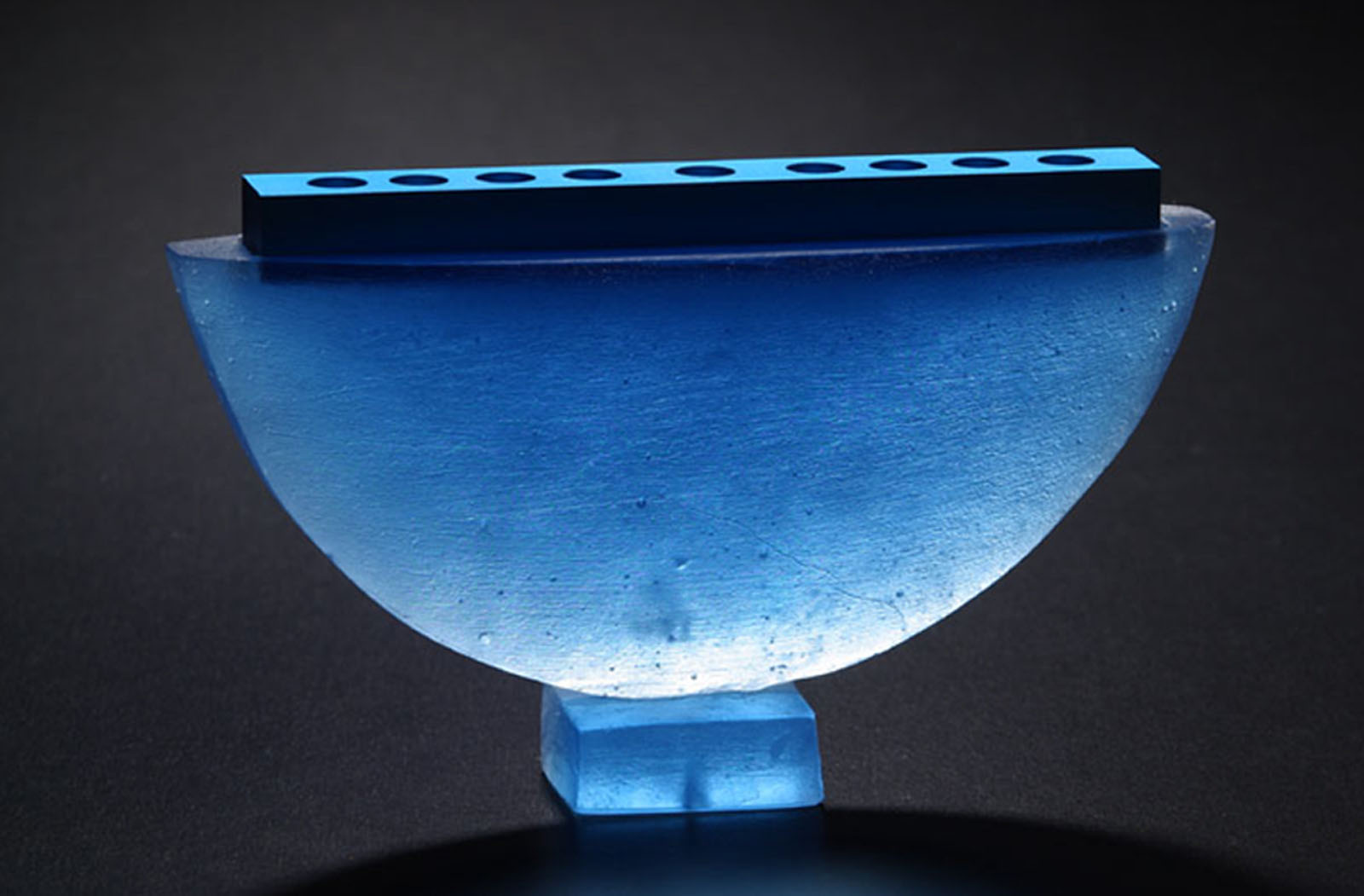
Menorah
105 x 50 x 195 mm, lead crystal and anodised aluminium
MEMORY WORKS
NATIONAL INSTITUTE OF ART GALLERY, CANBERRA – 2002
SYDNEY JEWISH MUSEUM – 2002
CRAFT VICTORIA, MELBOURNE AND CRAFT QLD – 2002
"Glass as a material is fragile, breakable. Not very much survives as material witness to history. That which remains is precious and treasured. Ede works in cast glass. It is challenging material to work with, to mould to shape and to master. And although it is vulnerable it is weighty. It has real presence."
Light and glass are synonymous. One reflects and dances off the other.
(Memory Works catalogue essay by Helen Light, Director, Jewish Museum of Australia 2002.)
TALES OF MIGRATION
The dish is a vehicle, which symbolises the knowledge passed around the family table. Three generation of my family; my parents, my children and myself.
My parents grew up in apartments: I grew up in a home and my children live in two houses. Row 2 My parents met in Australia and planted their seeds; I have two sons and who knows if they will bear fruit. My parents wore wedding rings: I cherish the locket I was given as a child and at this time neither of my sons wore jewellery. My mother trained as a corsetiere, my brother was a businessman and my children were in school.
The black dishes with the objects represent tangible objects of our lives: The clear empty dishes the future. The more I explored my family history, the empty dishes moved.
See reviews and press releases for the exhibition. See the catalogue for this exhibition.
All photographs by Stuart Hay except for total view of Tales Of Migration by David McArthur.
